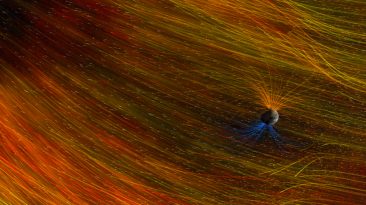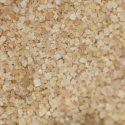Millions of years ago, the Earth looked very different. A huge landmass, called Pangea, covered about a third of our planet.
But about 175 million years ago, the Earth broke apart into continents, and formed the world we know today. But what if that had never happened?
Where would your country be located? And how different would your life be?
If Pangea existed today, in theory, you could drive from California to England, since they’d both be part of the same landmass. And although you may only think of Pangea as just another piece of land, it would be much more than that.
It’s played an integral part in human and animal evolution. If Pangea had not broken apart, you may not be here today.
But let’s assume that we survived and evolved to be the people we are today. What would the Earth be like?
First, let’s talk about where your country would be located. North America would be over here. Europe would be a lot closer, just to the east.
Asia would be up north, by Russia, and Antarctica would remain down south. India and Australia would be farther south, connected to Antarctica.
These countries that used to have hot climates would now be cold, covered with snow and ice. And those wouldn’t be the only environmental changes.
Regions in the middle of Pangea would have lush rainforests along their borders. And as you travel further inland, it would become a desert.
This would be due to Pangea’s landmass being so large. The rain which comes from the ocean wouldn’t be able to travel far enough inland — leaving parts of Pangea practically uninhabitable by humans and other species.
And weather up north would be different too, with Russia being much warmer than it is today. But the weather wouldn’t be the only thing that would change.
On Pangea, we might have less diversity of species. The species at the top of the food chain today would most likely remain there, but some of today’s animals would not exist in Pangea.
They wouldn’t have a chance to evolve. Fewer animals might make it easier to travel. And on this modern version of Pangea, you’d probably want to do a lot of it. Luckily you wouldn’t have to go far.
If you lived in Florida you’d be right next to the Caribbean islands, Venezuela and Brazil. You could visit all these in a single day! And if you lived in Nova Scotia, Canada, you’d be driving distance from France, England, and Germany.
Although this might sound like fun, a lot of countries would have new neighbors. Which could cause some serious
issues for some. Places like the United States which used to have oceans on both sides of the country, would now have Africa on it’s east coast.
If these countries didn’t get along, things could get ugly. How much easier would it be to start a war in another country if they were just a short drive away? Transporting weapons, people, and supplies would all be faster and cheaper if certain countries were right next to each other.
Or none of this would happen, and the entire world would be more unified than ever. With us all sharing the same land mass, maybe we’d learn to treat each other just a bit better than what we do now.
Maybe if we all lived in one country, like Pangea something like this would happen.
Thank you, Ian Webster, for the thumbnail image. Visit his website to see more.
Subscribe to What-If on Youtube or follow the show on Facebook Watch.
- “Facts About Pangaea, Ancient Supercontinent”. Ghose, Tia, 2018. livescience.com. Accessed September 9 2019.
- “A Most Delightful Map”. Krulwich, Robert, 2019. npr.org. Accessed September 9 2019.
- “Could A Modern Human Survive On Pre-Dinosaur Earth?”. Villazon, Luis. 2019. BBC Science Focus Magazine. Accessed September 9 2019.
- “The Facts About Alfred Wegener’s Pangaea Hypothesis”. Gill, N.S, 2019. Thoughtco. Accessed September 9 2019.
- “Discover Pangea, The Landmass That Covered One-Third Of The Planet”. Briney, Ammanda, 2019. Thoughtco. Accessed September 9 2019.



























